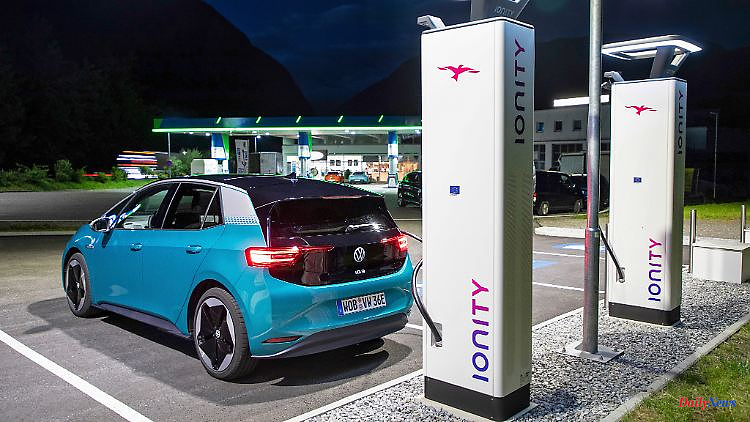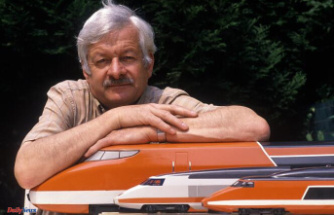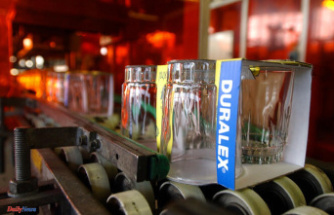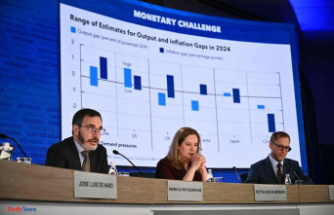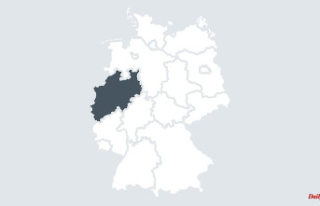Electric cars are trendy and are definitely fun to drive. But for many potential customers, the loading process is a closed book. How exactly does it work when the energy in the battery is running low and needs to be refilled? This is exactly what ntv.de explains in detail.
Buy an electric car, put it in and drive off? You can actually do that, but there are still hurdles. Because while classic combustion engines are simply content with a refueling stop at the no less classic gas station and you can simply pay there in cash, with an EC card or credit card, the charging system is like a real jungle. But with a few tips you can get through it quite well. Apart from the logistics (where do I charge how?), charging also involves financial pitfalls, but more on that later.
In 2022, anyone who wants to travel throughout Germany or even Europe with an e-car will not be able to do without a charging network. Charging networks provide apps or RFID cards with which the meanwhile dense network of charging stations from the largest providers (such as Allego, EnBW, Ionity or Vattenfall) can be activated - so the user can be sure that they are actually charging at the correspondingly listed charging stations to be able to and not to be stranded with an empty battery. Incidentally, billing is also bundled via the association - which is at least practical.
However, things are moving: From July 2023, new charging stations must be equipped with terminals that allow payment with EC and credit cards. Some charging stations already have these terminals, but overall the proportion is still small.
As long as the ranges of most electric vehicles are still quite volatile due to driving style and weather, the user is dependent on a dense charging network whose individual stations actually work reliably. In general, fast chargers that are set up along the freeways as well as in residential areas or in parking lots in urban areas cause the fewest problems. They usually belong to large charging brands that take care of the maintenance of the systems. Regional AC charging stations are often neglected and then it is quite possible to catch a defective power source.
But which charging network to use? There are different models - some with a basic fee, some without. Then it depends on the electricity prices, which want to be compared if possible. Particularly well-known providers with high charging capacities, so-called high-price operators, naturally charge significantly more money per kilowatt hour.
After all, you have planning security with the tariffs. If you use a specific charging card, you can rely on fixed rates. It is worth knowing that the following generally applies: charging with fast chargers is more expensive than with slower AC charging stations with type 2 plugs. The issue of costs in the context of electromobility is complex anyway.
Popular providers with authorization to activate the important pillars include ADAC, EnBW, Plugsurfing and Shell Recharge. The prices per kilowatt hour start at around 40 cents, with fast chargers you can also get almost one euro - of course, due to the volatility of the market, exact price information cannot be given here.
Do you have to prepare for a long-distance trip with an electric car? Not really. Practical tests have long since shown that you can drive off without a care with a card or app from one of the powerful charging networks. In the meantime, you can usually find a quick-charging station every 20 to 50 kilometers, and the chargers are usually not overloaded. At least in Western Europe there are currently around 150,000 charging points - you can get by with them.
In Germany, Aldi, Allego, EnBW, Ewe Go, Lidl, Ionity, Pfalzwerke AG and Telekom are among the major charging brands with DC locations at motorway service stations, hardware stores, in various parking lots or simply anywhere in residential areas. DC is the English abbreviation for direct current and guarantees at least 50 kilowatts of charging power, but sometimes up to 300 kilowatts and more. As a rule, the CCS connector is used here, a few vehicle models use Chademo. However, Chademo is not as widespread in Europe and therefore means restrictions in availability.
All electrically powered vehicles, on the other hand, have a type 2 plug for charging alternating current (AC = Alternating Current). However, slow charging with alternating current (usually 11, less often 22 kilowatts) will sooner or later become obsolete. Because it is too cumbersome to first look for a parking space with an electricity connection, which may not even be close to where you live. And then, after a few hours, the car has to be unplugged and parked again, because parking time is limited, especially in urban areas. An AC charging station, on the other hand, is not suitable for a short stopover in transit because charging here takes several hours.
At this point, we would also like to point out that you usually only draw power from a DC column until the charge level is 80 or 90 percent - because after that, the charging performance slows down badly. You shouldn't stay here for longer than 30 or 45 minutes in order not to block the point longer than necessary - because other drivers passing through are dependent on access to the "electricity charging station".
And another important point: how do I even find a charger? For example with the navigation device. If the battery is low, simply start an area search and be guided to a pillar in this way. Or using one of the numerous apps such as "Mobility" or those of other charging providers. By the way, these have nice filter functions with which you can filter according to the charging power, among other things. In this way, unwanted columns can be excluded immediately.
What will gain relevance in the future are built-in load planners as part of built-in navigation systems from various car manufacturers. Tesla has been offering this service since the market launch, but local premium brands are also following suit. You enter your destination into the navigation system, the computer simply throws out the necessary charging stops and even indicates the charge level with which you arrive either at the intermediate destinations or at the main destination. Provided that the driver keeps to the recommended speed.
The fact is: With a loading card in your pocket, starting a long-distance journey becomes child's play. And the fast charging network is growing and growing. Efficient charging stations can even be found at more and more classic gas stations. At the end of October 2022, Aral announced that it had already installed the thousandth charging station. This year there should even be 1500. In the medium term, Aral would also like to offer electricity for e-cars at every second pillar. Shell also offers its own charging station at its stations under the "Recharge" brand.
Of course, all this is not yet as dense as the conventional filling station network, but the current more than 10,000 charging points with more than 50 kilowatts of power should be significantly more by 2030. Whether Germany generally needs a million charging points, as stipulated in the coalition agreement , be undecided. Given that charging is getting faster and faster (in about five years, a completely new battery technology will be launched with solid-state batteries), we have to think again about how many columns are really needed. Above all: how many fast charging stations?
In the medium to long term, charging should become as easy as refueling. But until then you will still be able to experience one or the other exciting situation at the charging station. Because it's currently even more likely that one doesn't work than getting to a defective gas pump. And even that is by no means impossible.

